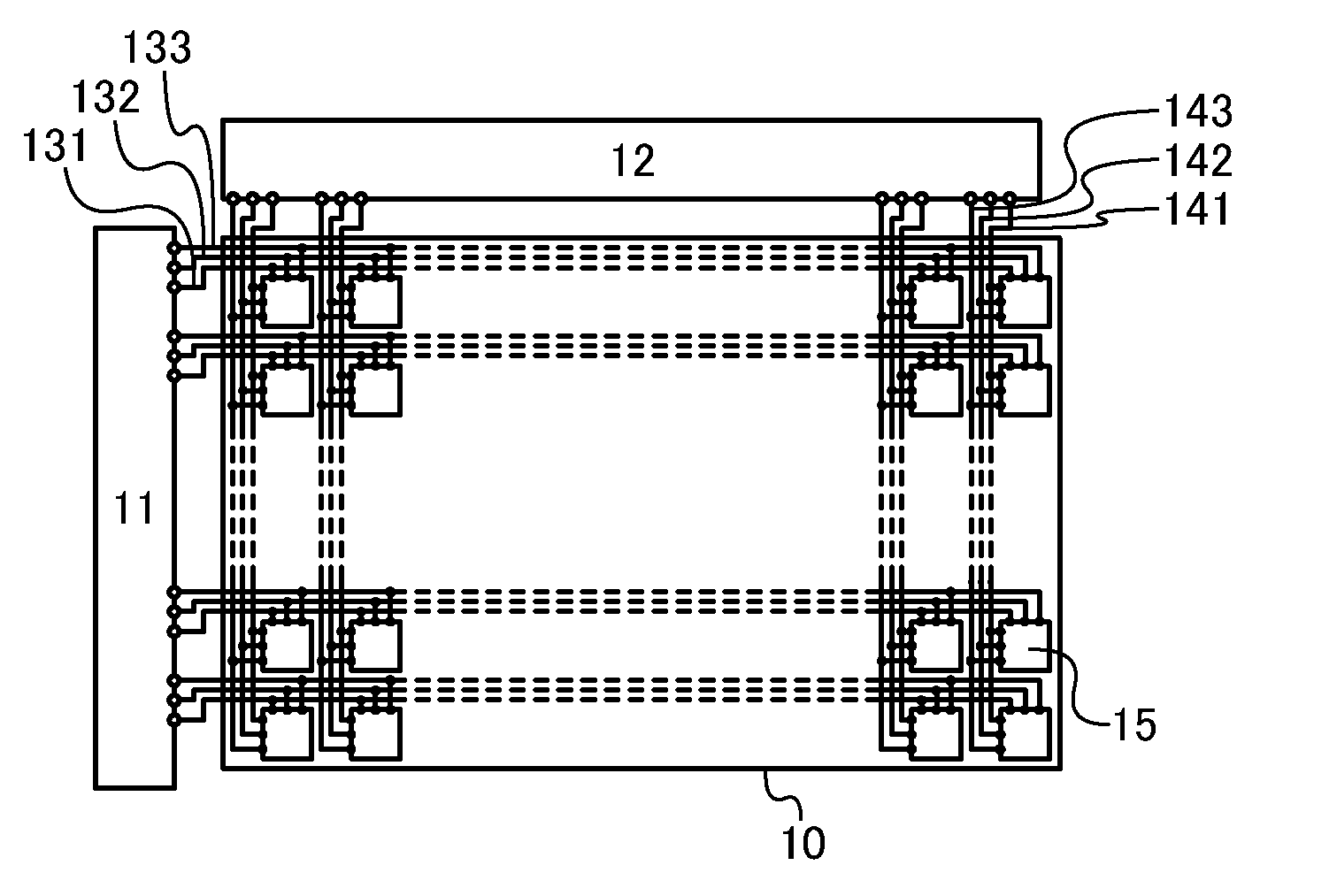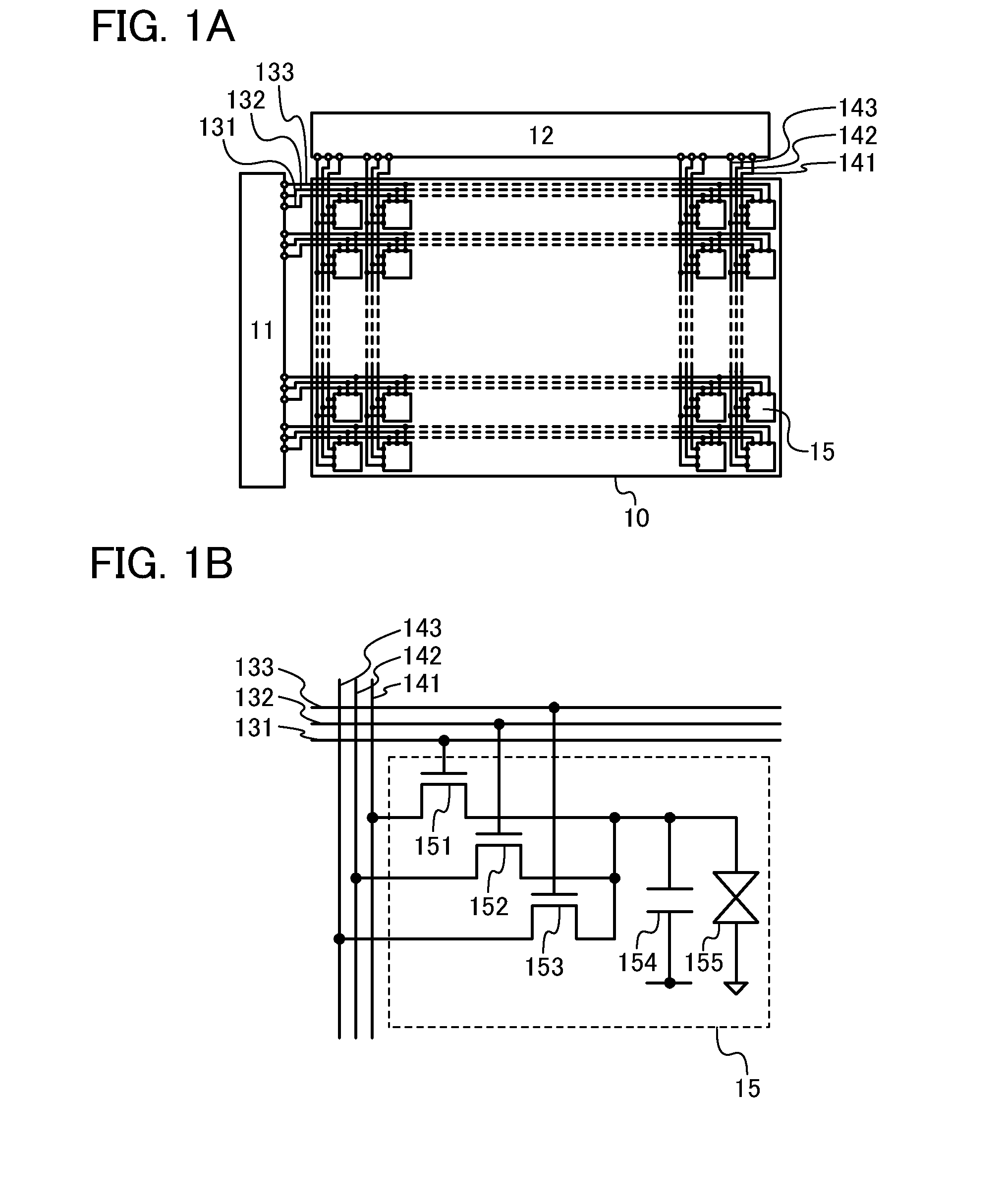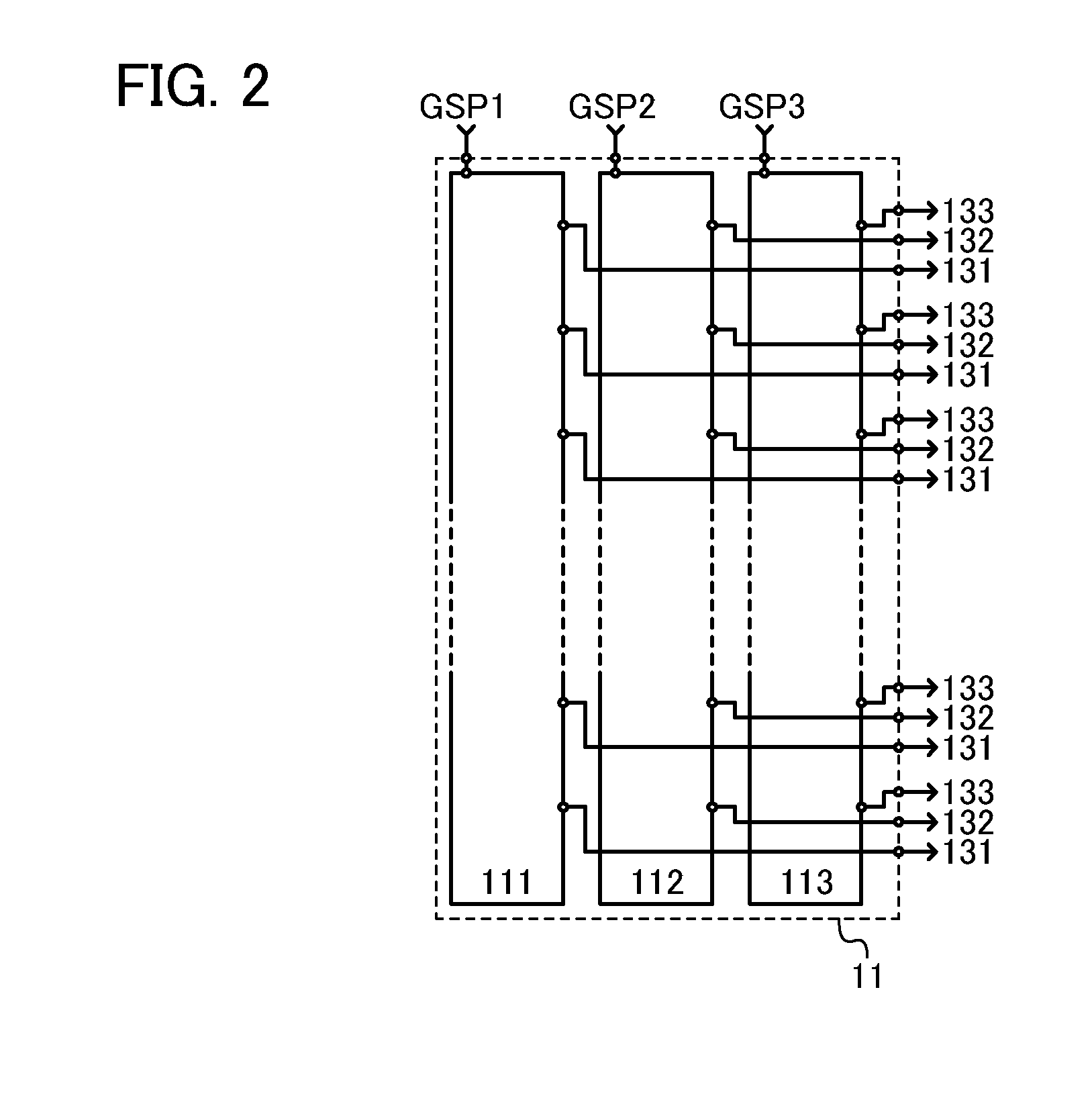Liquid crystal display device and method for driving the same
a liquid crystal display and display device technology, applied in the direction of digital storage, instruments, computing, etc., can solve the problems of difficult to improve the characteristics of transistors or the like, and achieve the effect of increasing the frequency of input of an image signal to each pixel
- Summary
- Abstract
- Description
- Claims
- Application Information
AI Technical Summary
Benefits of technology
Problems solved by technology
Method used
Image
Examples
embodiment 1
[0049]In this embodiment, an example of a liquid crystal display device in which images are displayed by a field sequential method will be described with reference to FIGS. 1A and 1B, FIG. 2, FIG. 3, FIGS. 4A and 4B, and FIG. 5.
(Structural Example of Liquid Crystal Display Device)
[0050]FIG. 1A illustrates a structural example of a liquid crystal display device. The liquid crystal display device in FIG. 1A includes a pixel portion 10; a scan line driver circuit 11; a signal line driver circuit 12; 3n scan lines 131, 3n scan lines 132, and 3n scan lines 133 (n is a natural number of 2 or more) arranged parallel or approximately parallel to each other; and m signal lines 141, m signal lines 142, and m signal lines 143 (m is a natural number of 2 or more) arranged parallel or approximately parallel to each other. The potentials of the scan lines 131, 132, and 133 are controlled by the scan line driver circuit 11. The potentials of the signal lines 141, 142, and 143 are controlled by the...
embodiment 2
[0073]In this embodiment, an example of a field-sequential liquid crystal display device having a structure different from that in Embodiment 1 will be described with reference to FIGS. 6A to 6D, FIGS. 7A and 7B, and FIG. 8.
(Structural Example of Liquid Crystal Display Device)
[0074]FIG. 6A illustrates a structural example of a liquid crystal display device. The liquid crystal display device in FIG. 6A includes a pixel portion 30; a scan line driver circuit 31; a signal line driver circuit 32; 3n scan lines 33 (n is a natural number of 2 or more) arranged parallel or approximately parallel to each other; and m signal lines 341, m signal lines 342, and m signal lines 343 (m is a natural number of 2 or more) arranged parallel or approximately parallel to each other. The potentials of the scan lines 33 are controlled by the scan line driver circuit 31. The potentials of the signal lines 341, 342, and 343 are controlled by the signal line driver circuit 32.
[0075]The pixel portion 30 is d...
embodiment 3
[0092]In this embodiment, a specific structure of the liquid crystal display device described in Embodiment 1 or 2 will be described.
(Example of Transistor Provided in Pixel)
[0093]In the liquid crystal display device in Embodiment 1, a plurality of transistors are provided in each pixel. Input of an image signal to the pixel is controlled by sequentially using the plurality of transistors. Thus, image signals can be concurrently supplied to pixels placed in a plurality of rows. Note that in the liquid crystal display device, the leakage of an image signal held at a pixel is accordingly increased in accordance with the increase in the number of transistors provided in the pixel. For that reason, in the liquid crystal display device, a transistor with excellent off-state characteristics (with low off-state current) is preferably used as the transistor provided in each pixel. An example of a transistor that is suitable for the transistor will be described below with reference to FIG. 9...
PUM
 Login to View More
Login to View More Abstract
Description
Claims
Application Information
 Login to View More
Login to View More - R&D
- Intellectual Property
- Life Sciences
- Materials
- Tech Scout
- Unparalleled Data Quality
- Higher Quality Content
- 60% Fewer Hallucinations
Browse by: Latest US Patents, China's latest patents, Technical Efficacy Thesaurus, Application Domain, Technology Topic, Popular Technical Reports.
© 2025 PatSnap. All rights reserved.Legal|Privacy policy|Modern Slavery Act Transparency Statement|Sitemap|About US| Contact US: help@patsnap.com



